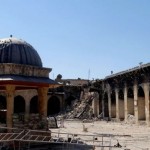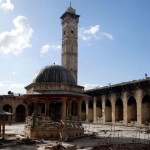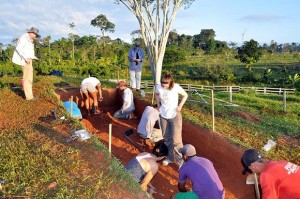
H.E. Mr. Ban Ki-moon, UN. Secretary General
United Nations
NY NY 10017
October 4, 2013
A Petition for UN’s Proclamation of October 29th as the “International Day of Freedom of Conscience and Religion”
Your Excellency:
We, the undersigned, have been authorized by World Cultural Heritage Voices to respectfully urge your Excellency to call on the appropriate organization of the United Nations to designate 29 of October as “International Day of Freedom of Conscience and Religion.” The World Cultural Heritage Voices is an organization dedicated to the preservation of the cultural heritage of each member of the international community, particularly those that have been ravaged by scourges of wars, sectarian violence, poverty and unrepresentative governments.
In the last few decades the world has witnessed widespread eruptions of violent ideological and sectarian conflicts within a number of societies. Such conflicts have, among other things, led to the rise of organized attempts to desecrate or otherwise destroy national, cultural and religious heritage of particular historical value to the community of nations. Such attempts often take place in societies where respect for individual’s freedom of conscience and religion has not yet been fully recognized as an essential principle of human rights.
Your Excellency:
It is upon these premises that we believe the designation of a day for celebrating the freedom of conscience and religion on the UN calendar will further signify the importance of respect for cultural and religious diversity which is the cornerstone of peaceful coexistence of peoples all over the world.
We further believe that 29 of October is an appropriate date for celebration of this freedom, for it was on this date that Cyrus the Great issued his historic decree on religious freedom and tolerance more than 2500 years ago. More importantly, Cyrus followed his decree on tolerance, diversity of cultures and freedom of worship by deeds that included delivering the enslaved Jews in Babylon. This decree has therefore been considered by many as the earliest expression of the recognition of a fundamental human freedom. The permanent exhibition of the decree at the entrance to the chamber of the Security Council of UN bespeaks of the universal recognition of its importance.
This year, the twenty-ninth day of October 2013, coincides with the ninth annual celebration of “Cyrus the Great Day” by Iranian people and many friends of culture across the globe. In 2005, it was the Pasargad Heritage Foundation- the first international NGO for preservation of the cultural heritage of Iran- that introduced the idea. At the time, Cyrus’ mausoleum in Iran- a monument registered on the UNESCO’s world heritage list – was in danger of being inundated and eventually destroyed. However, the hard work of this Foundation and timely intervention of UNESCO, human rights activists and organizations removed the danger and led to a world-wide recognition of Cyrus’ seminal contribution to the survival of our common human civilization. Such recognition has been further evidenced by the exhibition of Cyrus cylinder in a number of museums in major cities in United States of America.
Your Excellency:
At a time when, in a number of regions of the world, particularly in Africa and Asia, the basic rights and freedoms of millions of individuals have been curtailed, disregarded and violently denied by undemocratic and illegitimate governments, setting aside a day of celebration for freedoms of conscience and religion by the Parliament of Mankind will be of great and lasting importance. Such a measure would also constitute another vivid warning to political leaders of countries whose prisons are filled with prisoners of religion, conscience and belief.
Nevertheless, millions of people are still afraid of freely announcing their beliefs. Without any doubt, creating a special day for Freedom of Conscience and Religion would help the advancement of human rights.
Fully cognizant of your Excellency’s abiding respect for the fundamental rights and freedoms of all peoples of the world, we are looking forward to receiving a favorable response to our plea.
Respectfully Yours,
Shokooh Mirzadegi
Founder and Executive Director
Farid Hekmat
Legal Counsel
***
Please sign this petition
http://www.thepetitionsite.com/takeaction/655/271/493/
You may also sign without providing your address at:
http://www.ipetitions.com/petition/world-cultural-heritage-voices
ترجمه در خواست از سازمان ملل،
برای اعلام روز 29 اکتبر، به عنوان «روز بین المللی آزادی عقیده و مذهب»
عالیجناب آقای بان کی مون
سازمان ملل
چهارم اکتبر 2013
درخواست از سازمان ملل، برای اعلام روز 29 اکتبر، به عنوان روز بین المللی آزادی عقیده و مذهب
عالیجناب:
ما امضا کنندگان این نامه، از جانب «صدای میراث فرهنگی جهانی» ماموریت داریم تا با احترام از آن عالیجناب مجدانه بخواهیم که از بخش مربوطه سازمان ملل بخواهند تا روز 29 اکتبر را به عنوان روز بین المللی آزادی عقیده و مذهب اعلام کنند. صدای میراث فرهنگی جهانی سازمانی است اختصاص یافته به حفظ میراث فرهنگی کلیه اعضای جامعه جهانی، به خصوص آن ها که به وسیله ی لطمه های حاصل از جنگ، خشونت های فرقه ای، فقر، و دولت های غیر انتخابی لطمه دیده اند.
در دهه های اخیر جهان شاهد طغیان گسترنده ی برخوردهای خشونت بار ایدئولوژیک و فرقه ای در میان اجتماعات مختلف بوده است. این برخوردها قبل از هر چیز منجر به پیدایش فعالیت های سازمان یافته در راستای تخریب و یا از میان بردن میراث های فرهنگی و مذهبی دارای ارزش های ويژه تاریخی برای جامعه ملل شده است. این رفتارها اغلب در جوامعی اتفاق می افتند که احترام به آزادی شخصی عقیده و مذهب هنوز به عنوان اصل گوهرین حقوق بشر کاملا به رسمیت شناخته نشده است.
عالیجناب:
بر بنیاد این واقعیت هاست که ما باور داریم که تعیین روزی برای گرامیداشت آزادی عقیده و مذهب در تقویم سازمان ملل به اعتلای اهمیت احترام گذاری به گوناگونی فرهنگی و مذهبی که سنگ بنای همزیستی صلح آمیز مردمان سراسر جهان است کمک می کند.
ما همچنین باور داریم که روز 29 اکتبر روز مناسبی برای گرامیداشت این آزادی است چرا که در این روز بود که کورش بزرگ فرمان تاریخی خود را در 2500 سال پیش پیرامون آزادی مذهب و رواداری صادر کرد. مهم تر از آن این که او در پی صدور فرمان رواداری و پذیرش گوناگونی فرهنگ ها و آزادی نیایش، این نظر را با عمل خود به صورت آزادسازی یهودیان به بردگی گرفته شده در بابل تعقیب کرد. به همین دلیل است که این فرمان از جانب بسیارانی نخستین بیان پذیرش یک آزادی اصلی بشری تلقی شده است. به نمایش گذاشتن دایمی این فرمان در ورودیه تالار شورای امنیت سازمان ملل خود گویای شناخت جهانی اهمیت آن است.
امسال بیست و نهمین روز اکتبر 2013 با نهمین گرامیداشت سالیانه ی روز کورش بزرگ از جانب ایرانیان و مردمانی از فرهنگ های مختلف سراسر جهان است. در سال 2005 بنیاد میراث پاسارگاد که نخستین سازمان غیر انتفاعی بین المللی برای حفظ میراث فرهنگی ایران شناخته می شود فکر نام گذاری روز کورش را مطرح ساخت در آنزمان آرامگاه کورش در ایران که بنایی ثبت شده در فهرست میراث جهانی یونسکو است در خطر آب گرفتگی ویرانی ناشی از آن بود اما تلاش شدید این سازمان و دخالت به هنگام یونسکو، کنشگران و سازمان های حقوق بشری، از این خطر جلوگیری کرد و موجب آگاهی جهانی نسبت به دهش آغازین کورش در بقای تمدن مشترک انسان ها شد. شاهد چنین آگاهی گسترده ای برگزاری نمایش استوانه ی کورش در تعدادی از موزه های شهرهای بزرگ ایالات متحده آمریکا است.
عالیجناب:
در زمانه ای که در مناطق مختلف دنیا و به خصوص در آفریقا و آسیا حقوق بنیادین و آزادی های میلیون ها انسان از آن ها دریغ شده، و مورد بی اعتنایی و انکار خشونت آمیز دولت های غیر دموکراتیک و نامشروع قرار گرفته است، گزینش روزی برای گرامیداشت عقیده و مذهب به وسیله ی پارلمان نسل بشر واجد اهمیتی عظیم و ماندگار است. این اقدام اخطاری آشکار به رهبران سیاسی کشورهایی است که زندان هاشان پر از زندانیان عقیده و مذهب و باورند.
با این وجود میلیون ها انسان هنوز از بیان آزادانه عقاید خود می هراسند و بدون شک گزینش روزی برای آزادی عقیده و مذهب موجب پیشرفت حقوق بشری خواهد شد.
با آگاهی کامل از احترامی که آن عالیجناب برای حقوق و آزادی های بنیادین همه ی مردم جهان قایل اند ما چشم انتظار دریافت پاسخ مثبتی به تقاضای خود هستیم.
با احترامات
شکوه میرزادگی
موسس و مسئول امور اجرایی سازمان «صدای میراث فرهنگی جهانی»
فرید حکمت
وکیل سازمان «صدای میراث فرهنگی جهانی»
لطفا اگر مایل هستید این پتی شن را امضا کنید و برای دوستان تان بفرستید
http://www.thepetitionsite.com/takeaction/655/271/493/
You may also sign without providing your address at:
http://www.ipetitions.com/petition/world-cultural-heritage-voices























